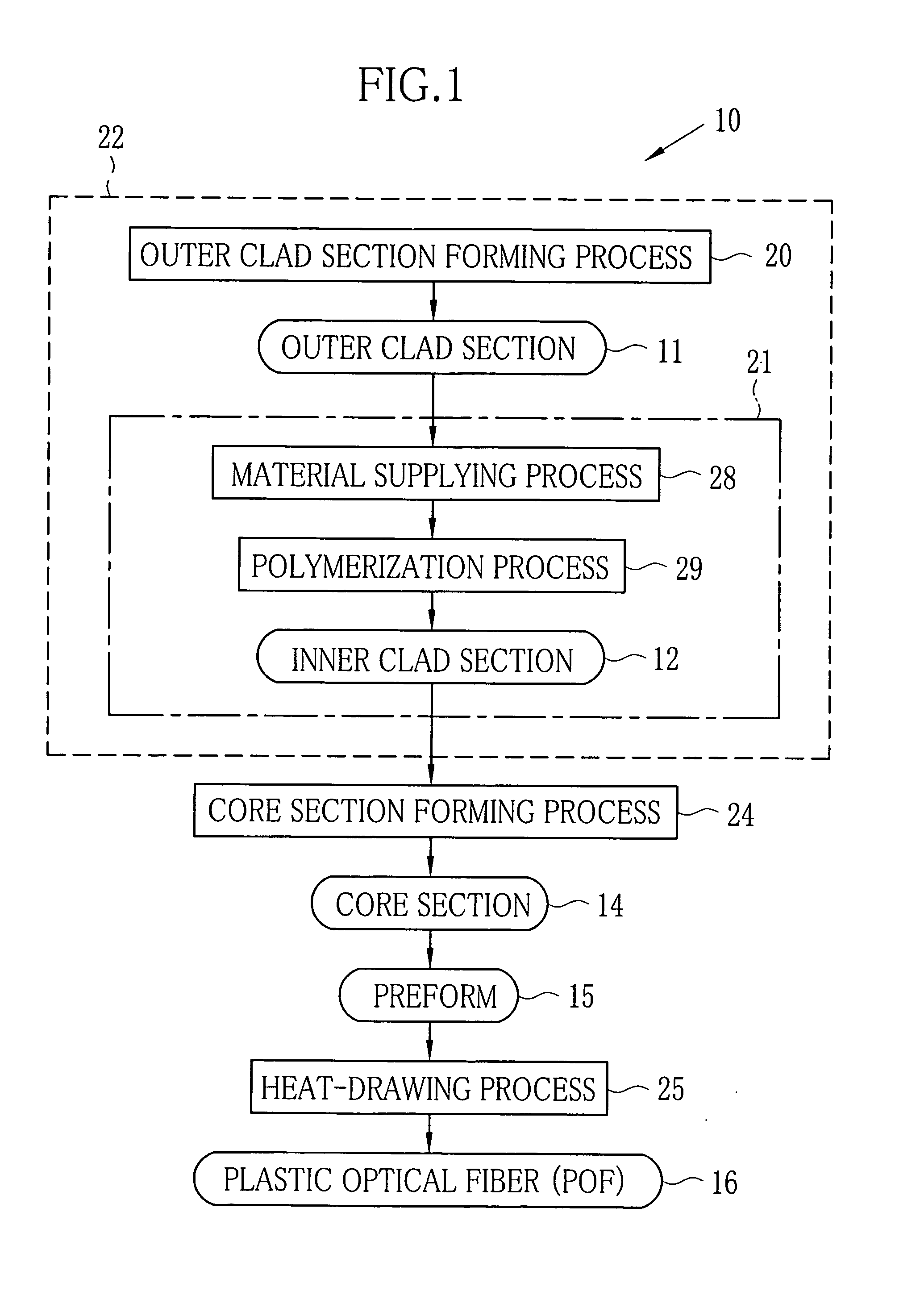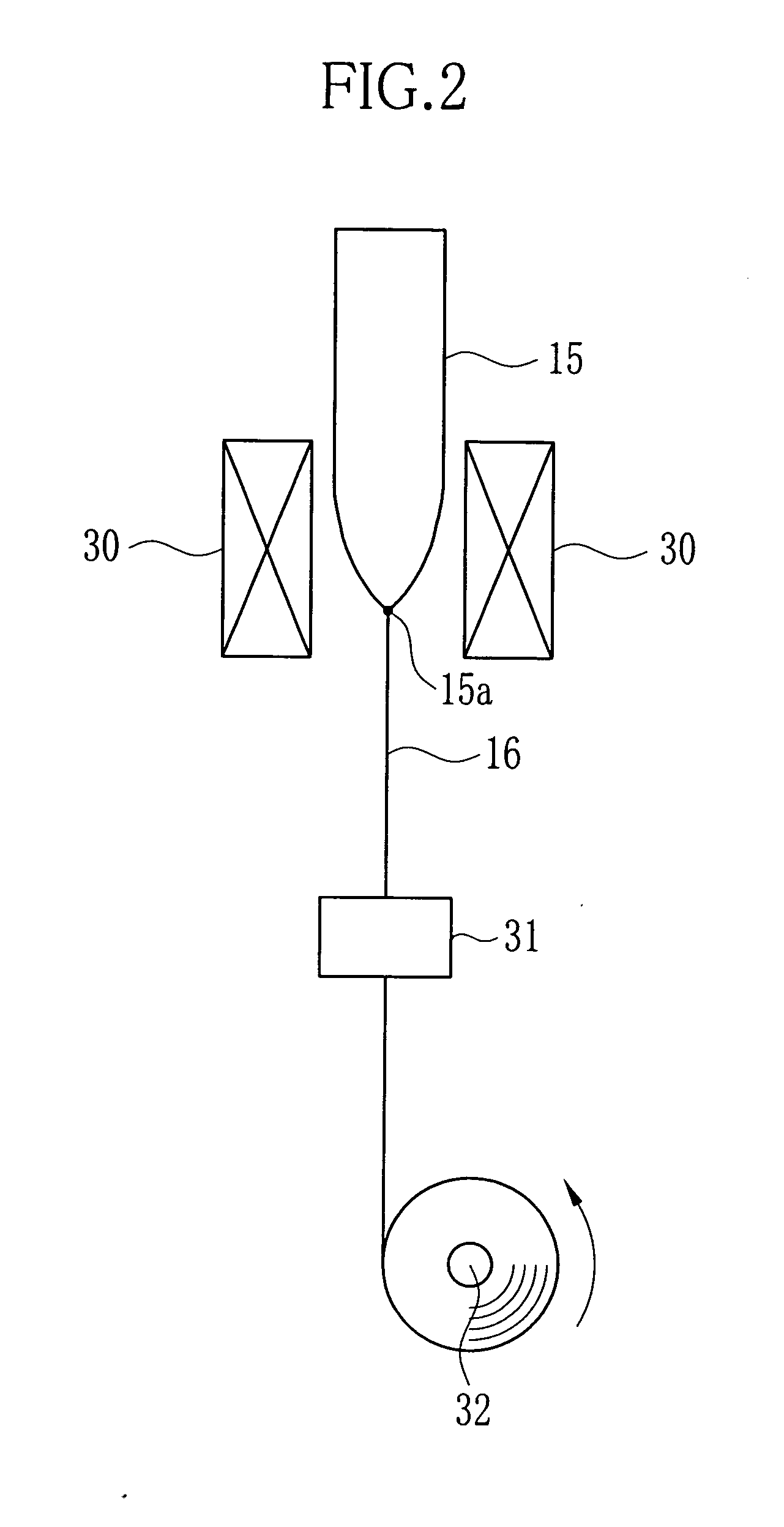Plastic optical fiber and production method thereof
a technology of optical fiber and production method, applied in the field of plastic optical fiber, can solve the problems of increasing the optical transmission loss in the pofs, the pofs is not suitable for optical transmittance for long distance, and the transmission loss is increased, so as to reduce the bending loss
- Summary
- Abstract
- Description
- Claims
- Application Information
AI Technical Summary
Benefits of technology
Problems solved by technology
Method used
Image
Examples
example
[0096] In the Example (in Experiments 1-1 to 1-3), three types of POFs 15 having different outer diameters are produced from the preforms 15 by changing conditions of heat-drawing. The preforms 15 were formed by the method described below. All of the produced POFs 15 were GI POFs.
experiment 1-1
[0097] By the melt-extrusion molding, the cylindrical outer clad section 11 was formed of PVDF having the molecular structure in which the number of the defect bonds of the successive CF2 units and successive CH2 units constitutes 4.5% with respect to the total number of the bonds of the CF2 units and CH2units. The outer clad section 11 had the inner diameter of 20 mm, the length of 905 mm, and the outer diameter of 20.5 mm. The average roughness Ra′ of the inner wall of the outer clad section 11 was 0.23 μm. A surface roughness meter (product name: VK-8500, produced by Keyence Corporation) was used for measuring the average roughness Ra′.
[0098] The inner clad section forming material was poured into the hollow portion of the outer clad section 11. The inner clad section forming material was 185 g of MMA in which the polymerization initiator and the chain transfer agents were mixed. The polymerization initiator was dimethyl-2,2′-azobis(2-methylpropionate) (product name: V-601, prod...
experiment 1-2
[0103] The preform 15 for producing the POF 16 was formed of the same material and by the same method as in the Experiment 1-1. The preform 15 having the outer clad section 11 with Ra′ of 0.23 μm was heat-drawing in the furnace 30. The produced POF 16 had the outer diameter of 470 μm. The outer diameter of the inner clad 42 was 440 μm. Ra of the outer clad 41 of the produced POF 16 was 0.07 μm. The bending loss of the POF 16 was extremely low (0.015 dB).
PUM
 Login to View More
Login to View More Abstract
Description
Claims
Application Information
 Login to View More
Login to View More - R&D
- Intellectual Property
- Life Sciences
- Materials
- Tech Scout
- Unparalleled Data Quality
- Higher Quality Content
- 60% Fewer Hallucinations
Browse by: Latest US Patents, China's latest patents, Technical Efficacy Thesaurus, Application Domain, Technology Topic, Popular Technical Reports.
© 2025 PatSnap. All rights reserved.Legal|Privacy policy|Modern Slavery Act Transparency Statement|Sitemap|About US| Contact US: help@patsnap.com



